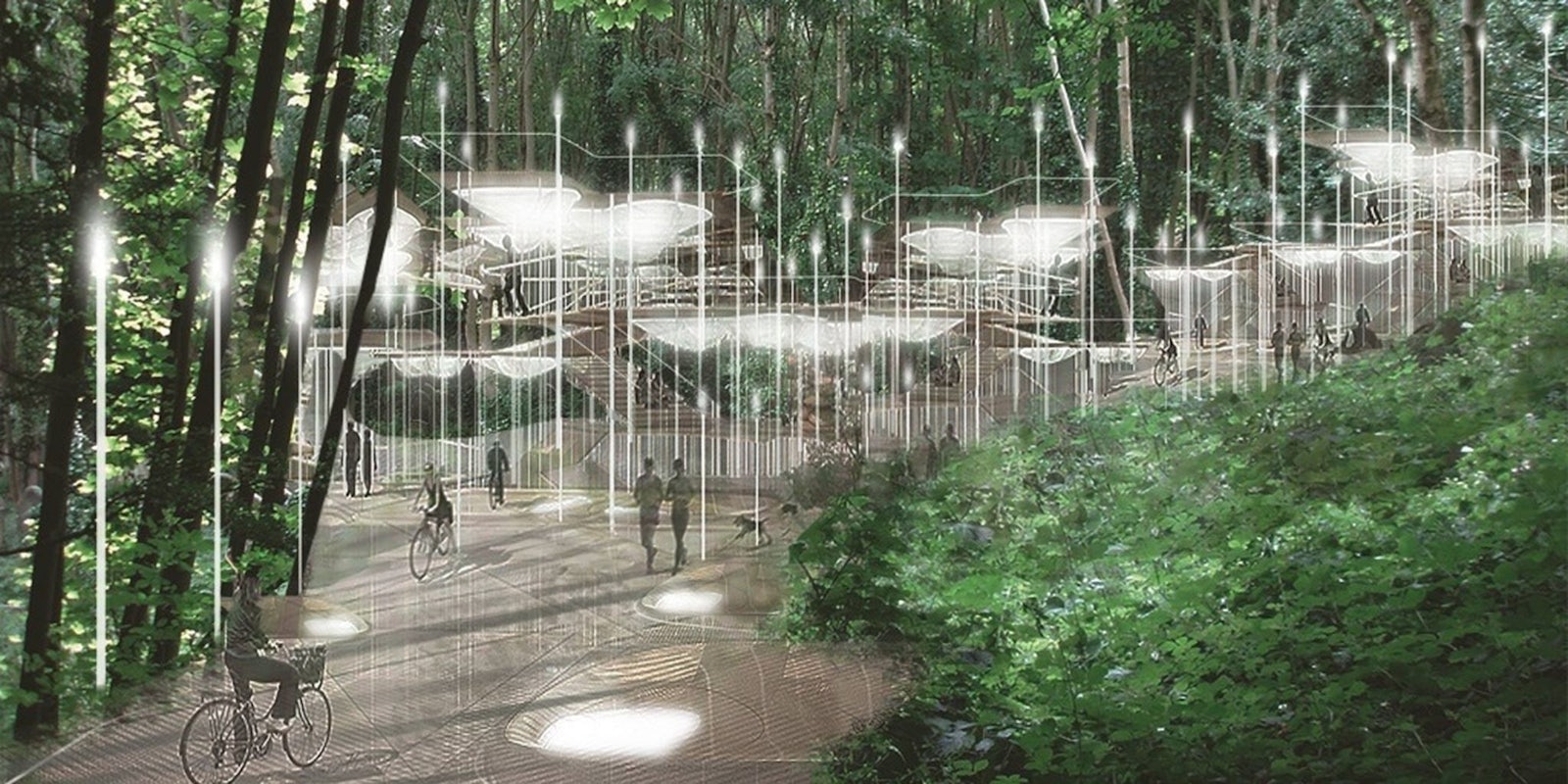Cemeteries of the future might shrug the dark, creepy stereotype, instead be illuminated by lights powered by decomposing bodies.
The University of Bath’s Centre for Death and Society hosted a design competition to reimagine cemeteries. The winning project from researchers at Columbia University’s DeathLAB called “Sylvan Constellation,” generates reusable light from human biomass.
Hanging among trees or supported by structures, the white lights that turn cemeteries into ethereal greenspace lit up when biomass, or decomposing human remains, are converted into energy. The so-called “mourning lights” are powered by microbial fuel cells, and each light corresponds to one person in the cemetery.
The team from Columbia won £5,000 (about $7246) and will spend a month’s residency this summer at the Arnos Vale Cemetery in Bristol, UK, researching potential possibilities for a prototype.
Though the bright lights powered by human remains won the competition for cemeteries of the future, the DeathLAB wants to further integrate similar types of memorials into cities and community infrastructure.
In a statement, Karla Rothstein, founder and director of the university’s DeathLAB, explained the organization’s vision for end-of-life planning.
Our goal is to offer elegant options at death that are commensurate with the social and environmental values we respect while alive. Our proposal aims to secure civic space for the future metropolis, allowing one’s last impactful act to gracefully and responsibly celebrate the vitality of life.
DeathLAB was founded to produce environmentally responsible projects that reweave the ubiquity of death into the fabric of our cities, reminding us of our mortal finitude and the responsibility the living share to fortify our collective future. We appreciate Future Cemetery and Arnos Vale’s optimistic support of the cultural shifts that our work embodies.
Columbia University’s project uses sustainable technology to commemorate death on a large scale, but projects like the Bios Urn and its new app-connected automatic watering pot bring environmentally friendly after-life options to an individual level.
The DeathLAB initially created the constellation project in 2013, but with the support of the Centre for Death and Society and the Arnos Vale Cemetery, researchers can further work on a prototype design that may one day light up the paths of departed loved ones.
H/T PSFK | Photo via University of Bath’s Centre for Death and Society



